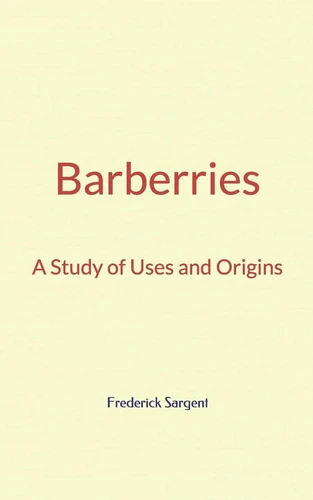Barberries : A Study of Uses and Origins
Par :Formats :
Disponible dans votre compte client Decitre ou Furet du Nord dès validation de votre commande. Le format Multi-format est :
- Pour les liseuses autres que Vivlio, vous devez utiliser le logiciel Adobe Digital Edition. Non compatible avec la lecture sur les liseuses Kindle, Remarkable et Sony
 , qui est-ce ?
, qui est-ce ?Notre partenaire de plateforme de lecture numérique où vous retrouverez l'ensemble de vos ebooks gratuitement
Pour en savoir plus sur nos ebooks, consultez notre aide en ligne ici
- FormatMulti-format
- ISBN978-2-36659-745-5
- EAN9782366597455
- Date de parution04/09/2019
- Protection num.NC
- Infos supplémentairesMulti-format incluant ePub avec ...
- ÉditeurLM Publishers
Résumé
The common barberry (Berberis vulgaris), being so abundant over the greater part of Europe, native to the soil, and at the same time both useful and beautiful, has naturally come to hold an important place in popular esteem. As a consequence it has received, in the course of centuries, a considerable variety of names in the different European languages, and some of these names, as might be expected, have undergone rather curious transformations...
Our forefathers bring the plant to this country (largely for the sake of its fruit), and thus it finally returns to the ancestral acres. It would surely seem to be not a little invigorated by its journey around the world, since in the acquisition of American territory it appears to be in a fair way to outdo its stay-at-home relative, and has already fully justified with us its Old World name of "common barberry."
Our forefathers bring the plant to this country (largely for the sake of its fruit), and thus it finally returns to the ancestral acres. It would surely seem to be not a little invigorated by its journey around the world, since in the acquisition of American territory it appears to be in a fair way to outdo its stay-at-home relative, and has already fully justified with us its Old World name of "common barberry."
The common barberry (Berberis vulgaris), being so abundant over the greater part of Europe, native to the soil, and at the same time both useful and beautiful, has naturally come to hold an important place in popular esteem. As a consequence it has received, in the course of centuries, a considerable variety of names in the different European languages, and some of these names, as might be expected, have undergone rather curious transformations...
Our forefathers bring the plant to this country (largely for the sake of its fruit), and thus it finally returns to the ancestral acres. It would surely seem to be not a little invigorated by its journey around the world, since in the acquisition of American territory it appears to be in a fair way to outdo its stay-at-home relative, and has already fully justified with us its Old World name of "common barberry."
Our forefathers bring the plant to this country (largely for the sake of its fruit), and thus it finally returns to the ancestral acres. It would surely seem to be not a little invigorated by its journey around the world, since in the acquisition of American territory it appears to be in a fair way to outdo its stay-at-home relative, and has already fully justified with us its Old World name of "common barberry."



